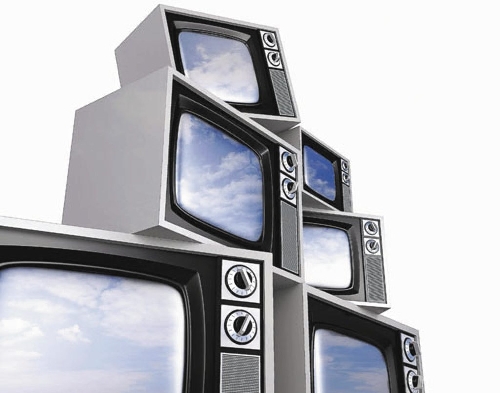It’s costing more to watch TV

We’re about to give you one more reason to hate the New York Yankees and star third baseman, Alex Rodriguez.
We’re not talking about bloated salaries, polyester uniforms, performance-enhancing steroids or those insufferable fans yapping and barking about the 27 world championships.
Nope, it’s way worse than all of that: To hear subscription-television providers tell it, the Yankees and Rodriguez are partly why it’s almost cheaper to go see the club play in person than it is to watch them from the family room. The $275 million contract Rodriguez nabbed in 2008 is paid for in part by money from the Yankees’ TV contracts. That rich deal is but one example of the cost pressures built into your cable or satellite bill, and that bill is growing noticeably this spring.
Basic-cable rates through local provider Cox Communications are set to rise 24 percent by Tuesday, to nearly $20, according to a sample invoice the Review-Journal studied. Satellite provider Dish Network boosted its monthly service fees in February by 16.6 percent, to $34.99, for its least-expensive package. At satellite competitor DirecTV, monthly invoices are up an average of 4 percent, or $2 to $3 a month, in 2011, a spokesman said.
“We don’t produce our own content. We’re middlemen, of sorts,” said Juergen Barbusca, a local Cox spokesman. “When TV programmers raise their prices, we do our best to absorb as much of the increase as we can, but when these costs come through, in some cases, we have no other choice but to pass along a portion of those costs to our subscribers.”
Officials with DirecTV and Dish Network also blamed higher programming costs for many of their increases.
“Every year, there are more programmers asking for higher rates,” said Marc Lumpkin, Dish Network spokesman.
2011’s price gains aren’t confined to television service. That sample Cox bill, which includes bundled services for cable and Internet, shows a 6.3 percent jump in online charges.
Barbusca said it’s difficult to provide overall numbers on just how much Cox customers will pay under the new billing structure because service plans vary. Some of Cox’s individual fees will drop after Tuesday.
Counting all services, the sample invoice the Review-Journal looked at will rise about 4.5 percent in 2011.
Robin Flynn, a senior analyst with media-research company SNL Kagan in California, said that increase is right in line with the 4 percent to 7 percent average increases that cable providers nationwide are seeing these days, though she called the 24 percent boost in basic-cable rates a “pretty big number.”
And as with Cox, companies in other markets are seeing especially steep gains in basic-television charges, Flynn said. That’s partly a function of the rising cost of sports programming, but it’s also because other markets are posting big gains in the carriage fees local broadcast networks charge cable operators.
On top of programming costs, providers say they face broader economic headwinds.
Less revenue is part of the problem, as unemployed workers decamp Nevada and leave behind fewer households demanding cable service, Barbusca said.
Cox wouldn’t disclose the share of local households with cable service, but a December report from ratings service Nielsen NTI found that 60.7 percent of all U.S. households had cable in November, down from 61.7 percent a year earlier.
Plus, the cost of doing business has risen, with expense spikes in the materials providers use to deliver service. From pricier fiberoptic connectors to costlier cable boxes to bandwidth for 45 new high-definition channels in 2010 and 2011, it all adds up, Barbusca said. The company has services such as TV Caller ID, which lets viewers see caller information on their screen when the phone rings, and 3D programming.
Brian Dietz, a spokesman for the National Cable and Telecommunications Association in Washington, D.C., summed it up: “Programming is a huge part of costs, as are maintenance, equipment, inflation, customer service and technical assistance — all of the things that go into running a very labor-intensive and high-tech business.”
But one consumer advocate said any cost increase is just too much for consumers these days, and TV providers should look for additional ways to lower costs, rather than passing on higher expenses to recession-battered viewers.
Tracy Rosenberg, executive director of the Media Alliance, a consumer-advocacy group based in California, said subscribers might be willing to opt for smaller packages. In a 500-channel lineup, for example, most viewers might find a few networks they really love and another 100 channels they never watch.
“Are they making a good-faith effort to look for other options? There are potential alternatives people might enjoy that would be more affordable,” Rosenberg said.
Television isn’t a necessity like food and water, Rosenberg acknowledged, but cutting consumers out of in-depth debates and news coverage available on cable won’t foster an “engaged citizenry,” she said. Boosting prices on Internet access can be especially tough on the unemployed, who need online service to hunt for jobs, she added.
“If we’re talking about people being unplugged from Internet access and cable TV for economic reasons, then we’re talking about people on the margins becoming even more on the margins,” Rosenberg said.
There might not be much relief on the way for those consumers: Industry experts agreed that as long as programming costs continue their meteoric ascent, consumers will likely bear at least some of that burden in coming years.
And that means there could soon be one more reason for you to hate the New England Patriots, too: Just wait till quarterback Tom Brady’s $72 million contract, struck in September, hits your cable bill through the National Football League’s deals with ESPN, CBS, NBC, Fox and DirecTV.
Contact reporter Jennifer Robison at jrobison@review
journal.com or 702-380-4512.